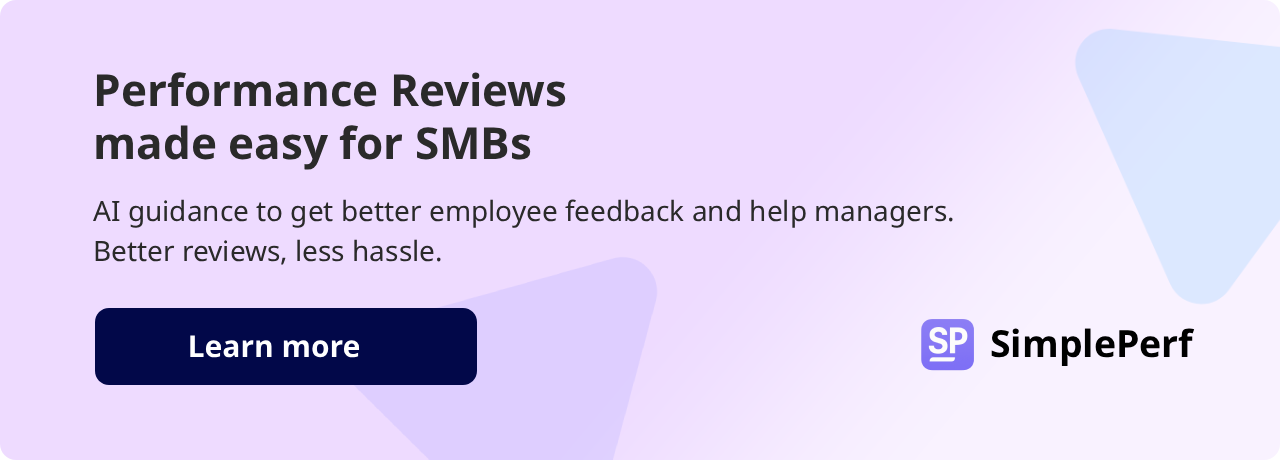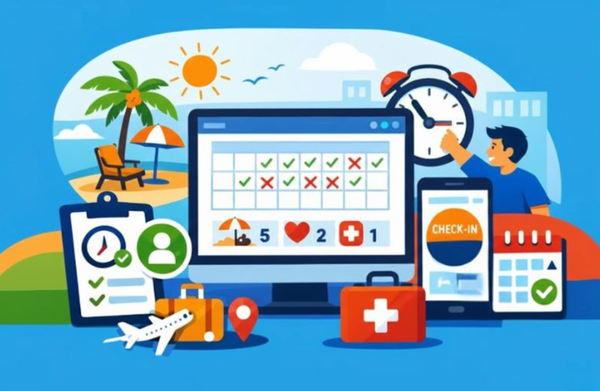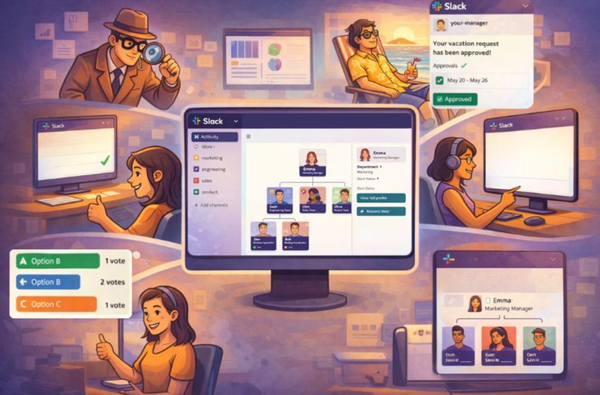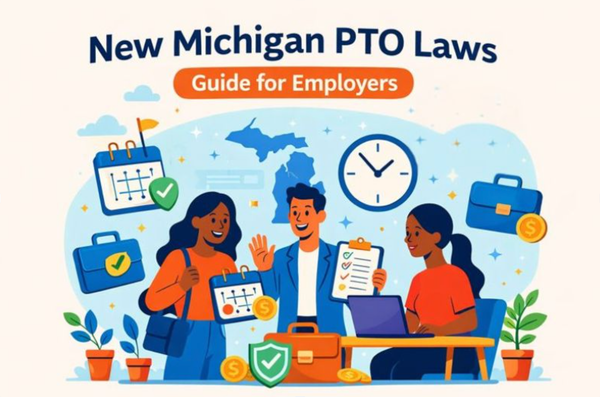How to prepare for a performance review as a manager: Beginner’s Guide
Discover how you can prepare for a successful performance review as a new manager with our beginner’s guide. Get key steps for preparation + additional resources.

Are you about to conduct a performance review for the first time? Hats off to you for seeking ways to prepare and conduct a great review. It can be daunting to say the least, but with this beginner’s guide, you’ll have everything you need to create an environment for meaningful conversation.
We’d be honored to take you through some useful insights, setting the foundation for you to become the manager everyone wants for their performance reviews.

How to prepare for a performance review
Preparing for performance reviews requires a range of activities that must be completed before the actual meeting. These activities help you get your mind in the game and increase your confidence to run effective performance reviews from the word go.
Here’s a quick run-down of these activities, we’ll expound later for those that need more info.
- Set up an appointment to discuss the employee’s performance at least two weeks in advance. This may sound obvious, but many managers become so busy that they forget.
- Gather concrete evidence of past performance (the review period), with specific examples that you can discuss with the employee. This helps you avoid vague or unsubstantiated comments.
- A successful performance review hinges on constructive feedback. After considering the employee’s performance, make notes on what you’d like to discuss.
- Consider how you want to deliver feedback. Almost all of the time, it's not what you say, but how you say it. This is especially important with difficult feedback.
- Develop a template for documenting feedback and identifying areas for improvement. Fostering employee growth involves taking actionable steps, and these should always be documented, along with deadlines for each step.
- Consider how you will conclude the meeting with your employee, offering encouragement and support.
Further resources for preparing employee performance reviews:
📃 What Is A Performance Review And How To Conduct Great Ones
🔧 Why Are Performance Reviews Important + 3 Tips To Improve Them
How to set up performance evaluations
Set up an appointment for the performance review conversation at least two weeks in advance. You can do this by sending an email to each employee or scheduling a meeting via your business calendar system (such as Outlook or Google Calendar). Set aside adequate time for a fruitful discussion. This can take anywhere from 45 minutes to an hour.
Your employees should be given a fair chance to prepare for the review process. They should also evaluate past performance (for the period under review) and gather performance data they want to discuss. Provide them with pointers on how to proceed when you set up the meeting.
Helpful performance review resource for employees: What to say in a performance review as an employee
You could do this the hard way by setting up appointments and then doing follow-ups, or you could cut straight to the chase and subscribe to performance management software, like Simpleperf from BuddiesHR, that will not only schedule the performance review meeting, and reminders, but also pull all the other bits and pieces together that we’re about to discuss.

What evidence should you gather for a performance review?
Performance conversations should highlight both the employee’s strengths and areas for development. To achieve this, you need balanced evidence from a number of sources. This will help you have a meaningful discussion based on facts, rather than opinions and feelings.
When you conduct the performance appraisal like this, you have a better chance of keeping your employees engaged, focused, and tackling poor performance. Include the following in your document collection:
- 360 degree evaluation (multi-rater feedback)
- A self-assessment evaluation
- Evaluation criteria such as performance objectives (KPIs or OKRs)
- Past reviews
- Employee’s accomplishments during the review period
- Past annual performance reviews that can help you track historical progress
- Peer-to-peer recognition (emails, kudos, thank-you notes, awards)
As we mentioned, you could run around collecting this evidence, but if you invest in an automated review system (like Simpleperf), you’ll have a way to automate this collection process.
When the time-consuming parts are out of the way, you’ll have time to focus on areas for improvement, professional development opportunities, and rewards for those who deserve it. If you’re not sure what a performance management system can do for you, read: What are the best performance review software options available?
Give constructive feedback during a performance review
The performance review process should encourage mutual understanding, valuable insights (for both managers and employees), and productive conversation. To achieve this, you must carefully prepare the feedback you’re going to give.
This will avoid off-the-cuff opinions and comments that may serve to shut down the conversation, instead of achieving consensus.
Unbiased feedback is what you’re aiming for, and this means you will need to carefully evaluate all the evidence to get a full picture of your employee's output. Practice active listening and ask great questions that look beneath the surface. If you’re not sure what that looks like, use this handy resource:
❓ 6 Questions to ask in your performance review: Manager edition
How to give good feedback during the review process
Posture your mindset towards continuous improvement to get the most out of the conversation and keep things flowing. Incremental improvement between review cycles is usually a sign of cooperation, and as long as it continues, there is a way forward for achieving job satisfaction and employee engagement.
The GROW coaching model is an effective tool for managers seeking to provide constructive feedback. By focusing on key coaching skills that you can use to provide valuable insights, this model provides a foundation for delivering critical feedback and career development.
Use positive phrases like:
‘Thank you for your contribution towards the tender, you really excelled in the areas of teamwork and organization. Your colleagues were very satisfied with your work.’
Avoid phrases like:
‘There seems to be little output from you this quarter, and I’m wondering why that is. You’re a bit unfocused lately. This is not good’
Think you might put your foot in it under the pressure of a performance review? Don’t worry, we’ve got your back: Overall Performance Review Comments & Phrases You Can Use. According to a Harvard Business Review, negative performance feedback rarely leads to improvement, so as managers, we have to find other ways around difficult conversations.
Why should you document the review meeting?
You should carefully document the review meeting, not only because you want a record of what was discussed, but also to get you on the same page.
Documenting discussions makes them official, which is what a performance review should be. During the meeting, only a small fraction of what was discussed will be remembered by your employee, and you didn’t go through all this prep only for it to go to waste.
Either draw up your own template, allowing you to document the key points of the meeting, or use HR's template (we’re sure they have one). The template doesn’t have to be complicated or require hours to complete, but at the very least, it should include the following:
- Suggest actionable steps for the next review period with deadlines.
- Training that should be attended by the employee (for skills gaps).
- Milestone dates on which you’ll be doing a progress check-in.
- Employee strengths you’d like them to cultivate further.
- Any discrepancies in ratings or performance criteria (sometimes managers and employees cannot agree due to different data sources or other issues - this should be noted).
- Discuss career development opportunities that could be coming up (if applicable)
- Next review date.
How to conclude a performance review successfully
This is likely the most important part of your preparation for a performance discussion. How so? Because it will be the part your employee is likely to remember as they go out the door (or log out of the video meeting). While you can’t plan exactly what you’ll say because you haven’t heard from your employee yet, you can use these tips to wrap up the discussion:
- Thank your employee for their contribution to the meeting and for adequately preparing for it (hopefully).
- Summarize the most important points of the meeting (according to your understanding).
- Go through the key actions that they will take and by when. Now offer to provide ongoing support and assistance wherever they need it.
- Summarize the actions you’ll be taking to assist them in meeting organizational objectives. This makes employees feel that you are involved in their professional growth.
- Assure them you monitor progress, and how you will do this.
- Keep a positive tone, and keep the way open for ongoing dialogue.
Consider using performance review software (even if you’re a small team)
There are a number of top-rated performance review tools on the market that are easy to set up and use. For instance, Simpleperf by BuddiesHR is designed for small teams and is loved by first-time managers for its ease of use and ability to do all the tedious tasks associated with the review process. If that’s all it did, it would be a big win, but it also provides a way to automate 360-degree feedback and self-assessments.
Combined with other BuddiesHR apps such as Clappy Kudos, Pulsy Survey, Stany Standup, and Linky Directory, you’ll have a powerful, complete employee engagement system.
As a first-time manager, these tools will be invaluable for managing your team, keeping them engaged, and boosting their productivity. If you’re curious about what we’re saying, give BuddiesHR a test run if you want to be a success from the start.
👉 Take the first step towards winning performance reviews
Prepare for performance reviews like a pro
This guide might be called a beginner’s guide, but if you’ve gotten this far, you’re no longer a novice. You’ve received all the information you need to start preparing for a powerful, and dare we say, even satisfying performance discussion with your employee (if you can find a way to make it fun, you’ll have nailed it). You can do this!





